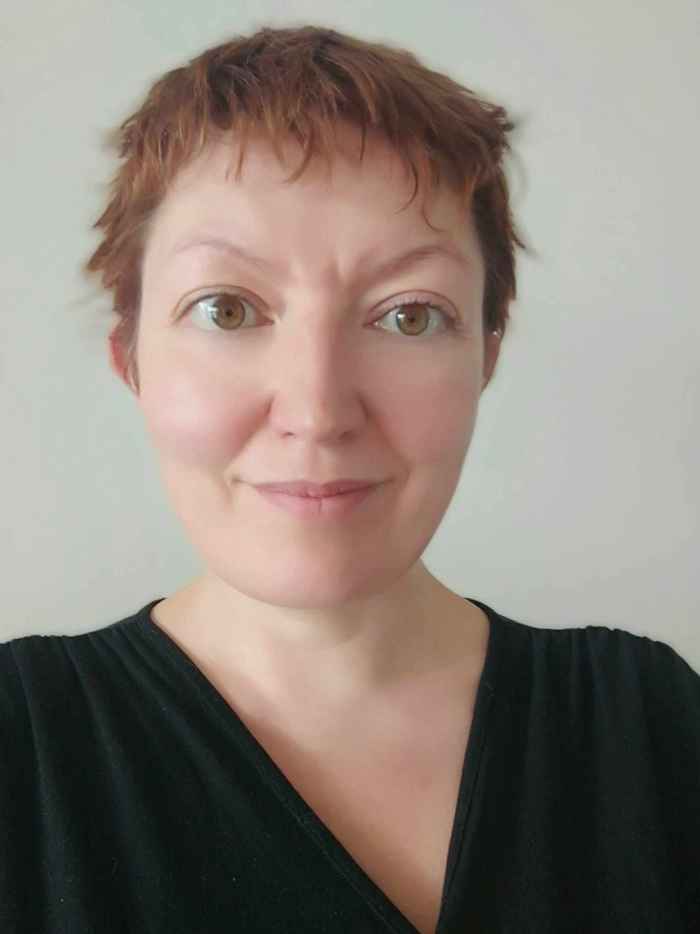 October 31, 2023
Panel
October 31, 2023
Panel
 Voxpop Amsterdam
Voxpop AmsterdamEastsplainers #8: Performing Arts
For this session, we welcome Kasia Lech, Igone de Jongh, and Anna Seidl as our guests, who will address the challenges encountered by art performers during their migration experiences. Kasia Lech, an Associate Professor in Global Performance History at the University of Amsterdam, will focus on Eastern European perspectives and examine migrants’ agency in shaping their socio-political-cultural representation against the backdrop of nationalist discourses and European crises. Igone de Jongh, formerly a Principal Dancer at the Dutch National Ballet, is a co-founder of The Ukrainian Ballet Company Foundation together with Senf Theaterpartners. De Jongh, along with a dancer from The Ukrainian Ballet Company, will share insights into their journey and the obstacles they have encountered. The Foundation comprises 60 dancers who sought refuge in the Netherlands following the Russian full-scale invasion in February 2022. The mission of the Foundation is to protect, support, and raise awareness about Ukrainian dance and ballet culture. Anna Seidl, Assistant Professor at the Department of German Language and Culture at the University of Amsterdam and a former Principal Dancer at the Dutch National Ballet, will serve as the session’s moderator.
About the speakers

Kasia Lech
Kasia Lech, with a PhD from University College Dublin, works as an Associate Professor in Global Performance History at the University of Amsterdam. She is a scholar, actor, storyteller, dramaturg, and puppeteer. Her research – conducted through traditional and artistic methods – explores multilingualism, migration, and cross-cultural encounters. These areas bring to the fore the multivoicedness of the contemporary world, its histories, and the theatre within it. She is the author of Dramaturgy of Form: Performing Verse in Contemporary Theatre (Routledge, 2021). Her second book Multilingual Dramaturgies: Towards New European Theatre is forthcoming with Palgrave. Kasia is a graduate of acting training at the AST National Academy of Theatre Arts in Poland and has performed internationally. She has co-founded Polish Theatre Ireland, a multilingual theatre company based in Dublin, and currently serves as an Executive Director at TheTheatreTimes.com, a global theatre portal which seeks to decolonize theatre criticism.

Igone de Jongh
After having been trained at Amsterdam’s National Ballet Academy and The Royal Ballet School of London, Igone de Jongh began her professional career with the Dutch National Ballet. At age 24, she was promoted to Principal Dancer, becoming one of the most famous Dutch ballerinas of her generation. In her career, she has worked with many choreographers, including John Neumeier. De Jongh has received many awards, including the Arnold Haskell Award in 1996, the Encouragement Award Dancers Fund Foundation in 2002, and the Alexandra Radius Prize in 2002. After her twenty-four-year career as a ballet dancer, she decided to dedicate her time to new artistic projects. In 2020, de Jongh joined the faculty of the European School of Ballet. After the Russian full-scale invasion of Ukraine on 24 February 2022, she established the United Ukrainian Ballet Company. Together with world-famous choreographer Alexei Ratmansky, de Jongh has been working on designing the programme for the ballet company.

Anna Seidl
Anna Seidl is a former Principal Dancer of the Dutch National Ballet and Assistant Professor at the Department of German Language and Culture at the University of Amsterdam. After an international career that has brought her into contact with leading choreographers and opera houses, she has engaged in academic research in cultural studies. She works on topics related to visual cultures and life narratives and is currently involved in an EU-funded Horizon project on East-West perceptions, with a particular focus on the emotion-based discourses and practices of Othering in East Germany. Her chapter on the work of choreographer Hans van Manen was published in The Oxford Handbook of Contemporary Ballet (2021); another article, currently under revision, addresses the impact of the medium of film or video on viewers of dance performances. She continues to follow developments in the cultural sector, and her experiences as a dancer provide her with benefits in critical analysis of corporeality, aesthetics, and emotionality in performing arts.